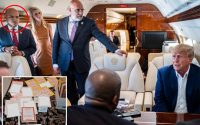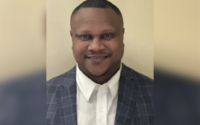United pilots retrained after plane nose-dived above Pacific: airline
The United Airlines pilots who were in the cockpit when their plane nosedived after taking off in Hawaii have been retrained, officials said — as aviation experts speculate they may have forgotten to program the aircraft’s autopilot.
The Boeing 777 dramatically plunged for about 10 seconds shortly after it took off from Maui International Airport bound for San Francisco on Dec. 18 and came within 775 feet of crashing into the Pacific Ocean.
“United then closely coordinated with the FAA and ALPA (Air Line Pilots Association) on an investigation that ultimately resulted in the pilots receiving additional training. Safety remains our highest priority,” United rep Josh Freed told The Post.
The plane had reached an altitude of about 2,200 feet before it plummeted 1,400 feet about a minute into the flight — reaching a descent rate of almost 8,600 feet per minute before the pilots regained control.
Some flight experts have suggested that the terrifying plunge could have been caused by the pilots forgetting to program the plane’s autopilot feature.

It’s likely the pilots would want to use autopilot due to rainy weather conditions, aviation consultant Kit Derby told The Daily Mail.
“So one of the things that pilots do is set an altitude, which is a target for the autopilot. If that altitude was set lower [then the current altitude] then the autopilot would descend,” Derby said.
Once pilots receive clearance for takeoff, they typically set the autopilot to the correct altitude, he said.

“If that step didn’t occur, then it could still be at the airport elevation, which would be below you at this point,” he said.
Derby also speculated that the autopilot could have malfunctioned, but noted such incidents are “extremely rare.” It’s also unlikely that the plane itself suffered some kind of malfunction.
“They weren’t very high. And they came very close to the water. But they didn’t really lose that much altitude, I mean, 500 feet or so is not a lot of altitude in the big picture unless you’re close to the ground,” Derby added.

Investigators will review all of the plane’s systems as well as the weather conditions at the time before concretely concluding what went wrong, aviation safety expert Anthony Brickhouse of Embry-Riddle Aeronautical University told the Daily Mail.
“Like the rest of the world, I literally just learned about this yesterday. And there’s so many questions, because this is not a typical movement that you would see an aircraft making at any point in a flight, so it’s just a really interesting situation,” he said.
Brickhouse said he found it “very concerning” that the plane decided to continue its flight to San Francisco after nearly diving into the sea.
“So speaking purely from a safety perspective, I would have preferred to see that aircraft, you know, turn around and land back at Maui, and make sure that the aircraft was in good condition,” he said.
However, Dirby said the pilots were under no obligation to turn the plane around if they thought there was nothing wrong with the plane and it was just a pilot error.
After the plane landed in San Francisco the crew “filed the appropriate safety report,” Freed said.
“The pilots fully cooperated with the investigation and their training is ongoing,” he said, adding that the two pilots had about 25,000 hours of combined flying time.
No one was injured during the incident, which was just made public following Air Current’s report, citing data from FlightRadar24.

Rod Williams II, his wife and two kids were sitting at the back of the plane when they felt it suddenly begin to steeply descend.
“There were a number of screams on the plane. Everybody knew that something was out of the ordinary, or at least that this was not normal,” he told CNN.
“You don’t know if this is an issue, but it was certainly out of the ordinary,” added Williams, who studied aviation in college.
He said he and his wife could do nothing but pray for a miracle “because we felt like this could be it.”
Once the plane was in control again, someone from the cockpit got on the intercom and said, ‘All right, folks, you probably felt a couple G’s on that one, but everything’s gonna be OK. We’re gonna be all right,’ ” Williams said.


